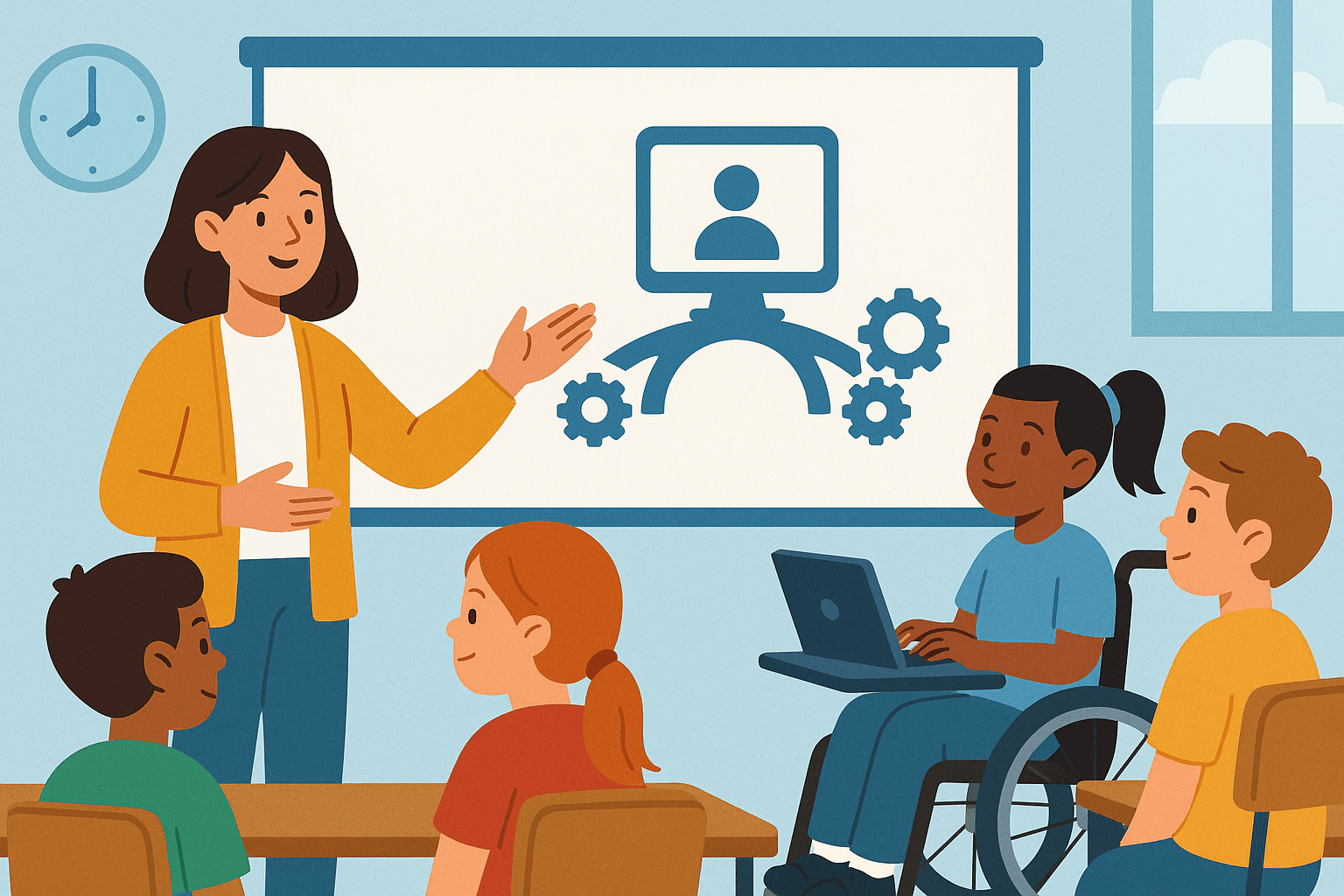Last month, I attended Rohan Slaughter’s presentation at Communication Works in Oldham, and I left thinking not just about devices, frameworks or systems, but about people. His presentation on the new AT competency framework reminded me of something I see time and time again in schools across the country: assistive technology succeeds or fails on the strength of the humans behind it.
As an assistive technology specialist visiting mainstream and specialist settings up and down England, I see a broad range of practice, and a startling gap in digital confidence. While some schools are quietly brilliant, others struggle to charge or turn on a device. This isn’t a criticism of individuals, but rather a reflection of how little attention is paid to meaningful, structured, ongoing training for those who support learners with the highest needs.
Too often, training is either unavailable or poorly targeted. Teaching assistants, arguably the adults who spend the most consistent time with learners, are given the least access to high-quality Assistive Technology CPD. Time, funding and workload pressures are the usual culprits. But the cost of underinvesting in people is measured in missed opportunities for our most vulnerable pupils.
What struck me about the report was its emphasis on basic digital confidence as a foundation for everything else. If staff don’t feel comfortable troubleshooting a Windows update, how can they confidently support a high-tech communication aid or switch-access gaming setup? It’s not just about having a device in school; it’s about knowing how to use it meaningfully, flexibly, and in ways that empower learners towards independence.
This means investing in people at all levels: from IT support and TAs to senior leaders. It means supporting AT specialists not just to deliver support, but to lead and train others. And it means creating environments where technology isn’t isolated or treated as a separate add-on, but embedded into everyday pedagogy and personalised, person-centred approaches.
Ultimately, AT isn't just about technology. It's about access, dignity, and ensuring that children and young people can learn, communicate, and participate fully. But for that to happen, the adults around them must also feel supported.
If we want consistent, long-term outcomes for learners using AT, we need consistent, long-term investment in the people supporting them.
You can read the full report, “Developing a competency framework for effective assistive technology training” (DfE, May 2025), here:
https://www.gov.uk/government/publications/developing-a-competency-framework-for-effective-assistive-technology-training
Ready to explore how assistive technology can help?
Our team of experts is here to provide personalised advice and solutions.
Contact us today for a friendly, no-obligation discussion about your needs.
Get in Touch


